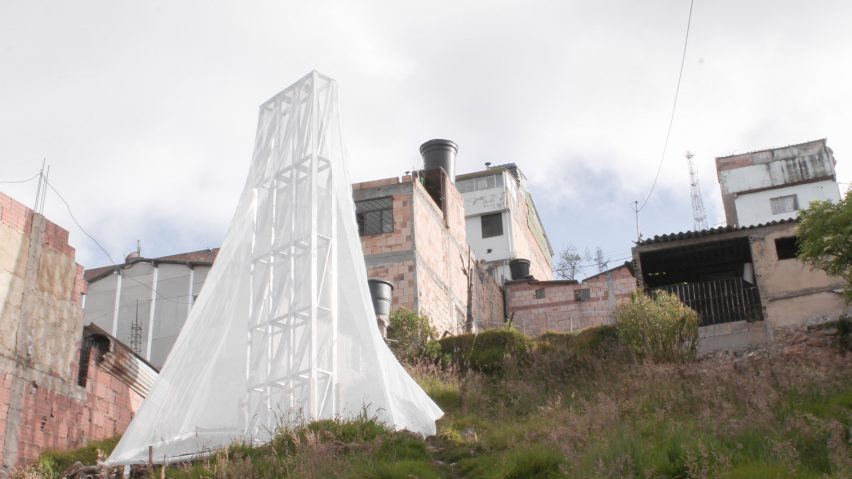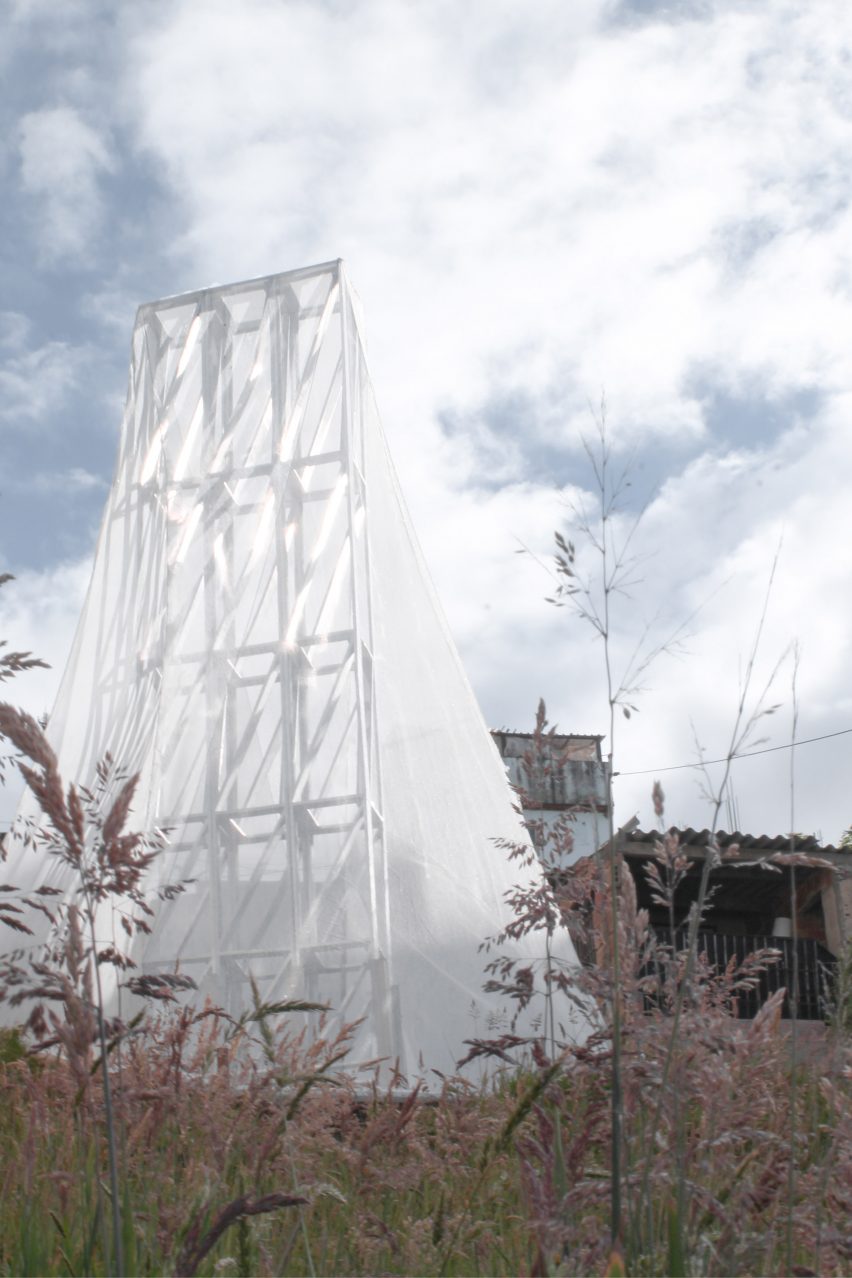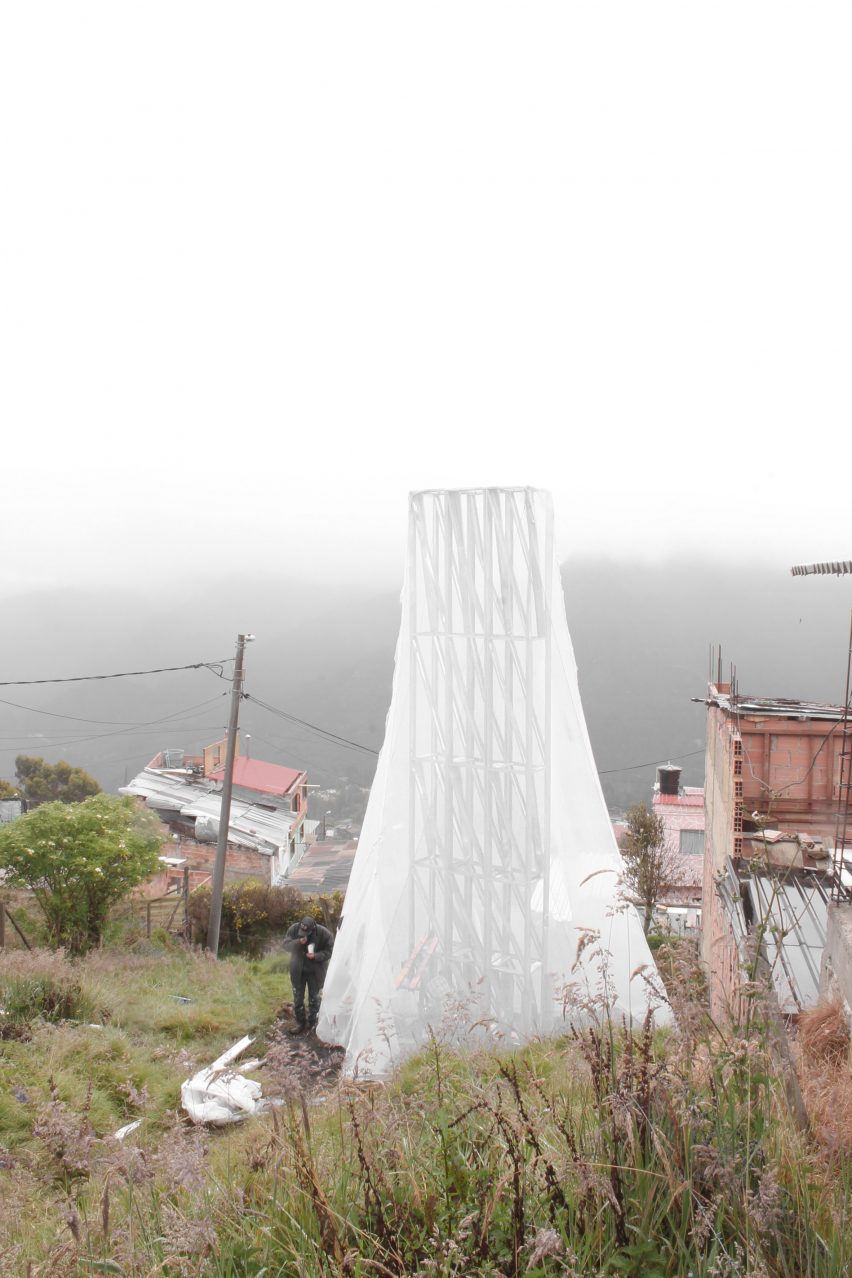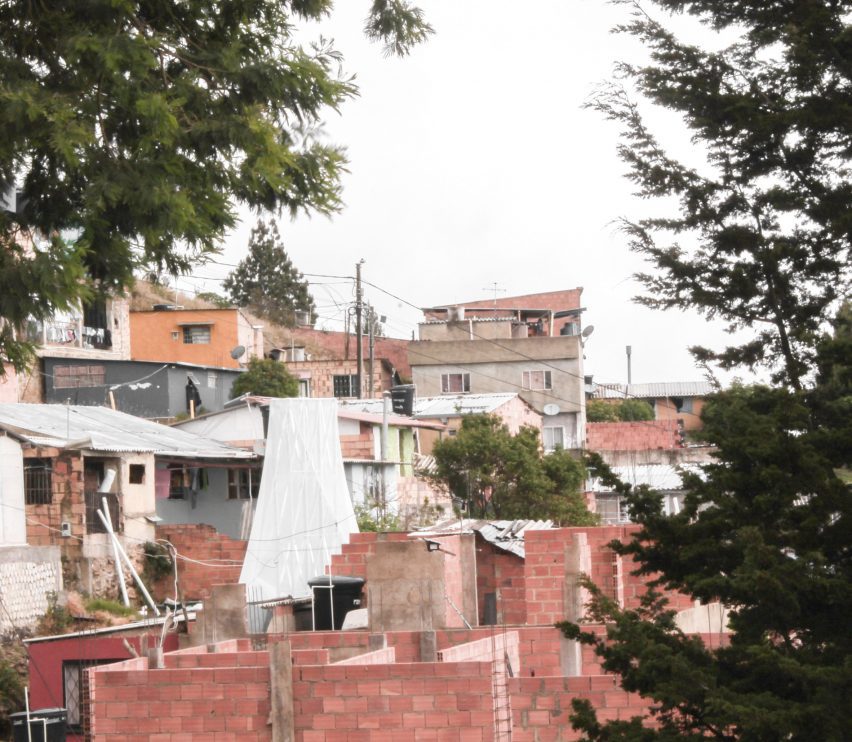
Alsar Atelier and Oscar Zamora create Bogotá fog catcher
Design studio Alsar Atelier and designer Oscar Zamora have created a structure in Bogotá, Colombia, that can collect 200 litres of water per week for the local community using a simple structure draped in fabric.
Commissioned by San Luis neighbourhood community leader Caesar Salomon, the project was designed to create an additional water source for locals.

Alsar Atelier, a studio based in Bogotá and Boston, worked with Nicaraguan designer Oscar Zamora and local official Edison Plazas to create a fog catcher that was built from affordable, easy-to-assemble materials.
The structure consists of a light steel frame wrapped in a plastic fabric called polisombra, which is used to create barriers around construction sites, is widely available and can be repurposed after industrial use.

"Transforming into a semi-industrialized construction context since the early 2000s, this material was introduced within the Colombian construction system relatively recently, and it is rarely used in the informal environments of the country," Alsar Atelier founder Alejandro Saldarriaga told Dezeen.
"Therefore, the project also takes on a critical position on the traditional construction methods of the self-built environments of Bogotá, concrete and brick, and introduces a material that is easily assembled, durable, with short construction times, and more sustainable."

The construction of the structure took five days and was carried out by four local community members, without the use of heavy machinery or concrete.
The studio wanted the structure to serve as an example of a functional, repeatable solution to the water needs of the community. It was donated to the community through the collaborative efforts of the designers, officials and the Colombian Society of Architects.

"The fog catcher, besides recollecting water and holding a greenhouse, also serves as an example of low-tech construction innovation within the San Luis Barrio, and helps familiarize community members with the material, and hopefully, they'll start using the light gauge steel frame instead of concrete and brick," Saldarriaga continued.
After the water condensates on the fabric, it flows towards PVC piping at the bottom of the structure, where it can later be collected and used for grey water and for agricultural use.
According to Saldarriaga, the system can capture up to 200 litres of water per week during Colombia's rainy season.
The collaborators believe that the prototype will help alleviate dependence on local utilities with its increase in water supply and has "has become a landmark" in the neighbourhood.

"The project has also provided an opportunity for the local community to learn new construction techniques that promote sustainability," said the team.
"This prototype serves as an example of resilience within the self-built environment, showcasing that innovative and sustainable construction methods are possible even in challenging conditions."
Other similar water-harvesting techniques include artist Mary Mattingly's mesh-based gravity system used for an installation in New York City meant to filter rainwater to grow plants as well as a Water-gen's electricity-based machines that are used in conflict zones.